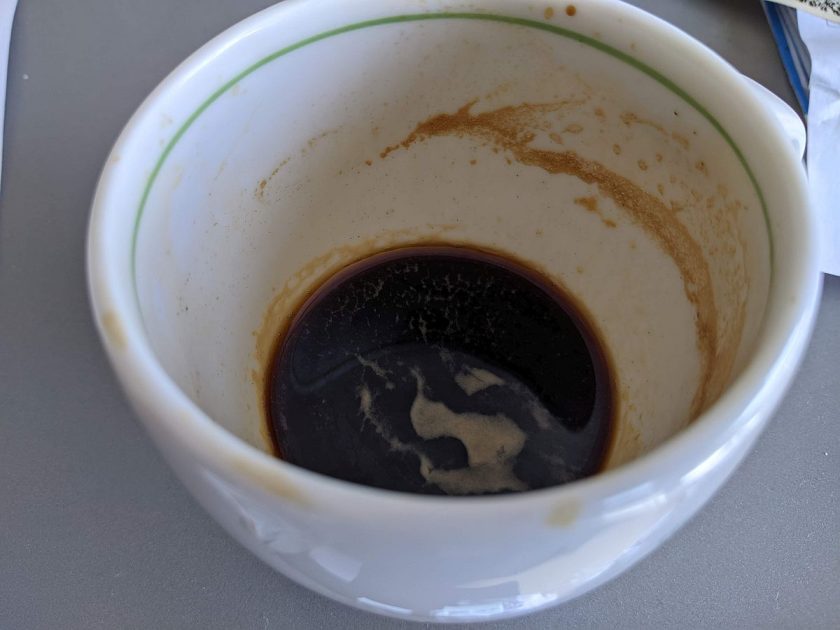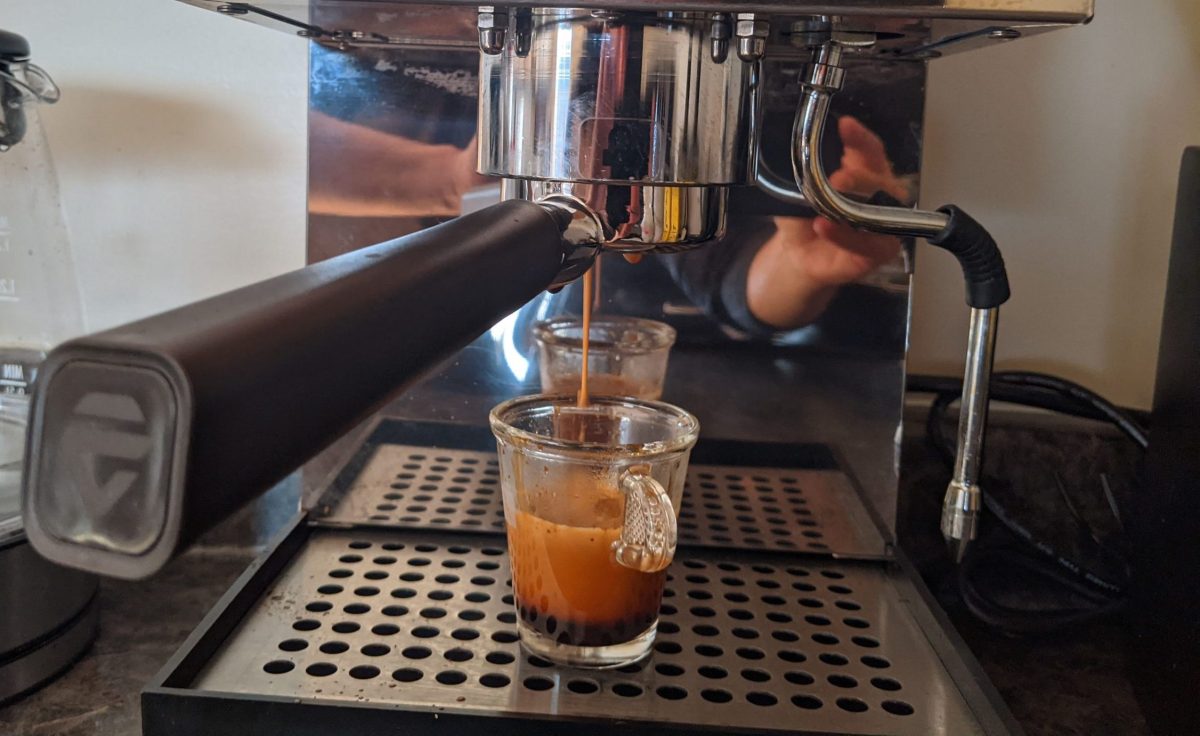If you landed on this page is probably because you heard discussions about ‘dead espresso’. You probably got worried about it, and are now thinking: “Am I letting my espresso die?” The good news is you probably don’t! But stick with me, and you’ll that as legitimate as it sounds, a “dead espresso” is just a hype term that doesn’t mean much in real life.
A Little Context
The idea is that an espresso should be drunk almost immediately after brewing, after which it rapidly starts to deteriorate up until a point where it is undrinkable and deemed dead. Is this true of false?
The concept of a dead espresso shot appeared during the training of Starbucks baristas. The idea as it was first proposed, was meant to train baristas to not “forget” shots on the counter for minutes before adding them to a cappuccino, or flat white. A little chatter found on the web confirms the history. If you read that Reddit thread, you can see that people have different opinions on the subject.
Now back from history to our dead espresso shot. As I write this, mine is already dead, I only took a sip from it.

What Does “Dead Espresso” Mean
Brewed coffee starts to change properties as soon as we finish preparing it. Most of the changes have to do with oxidation. Espresso, like any other coffee, is subject to oxidation as well, but there is also the crema that is part of the problem. Crema starts to dissipate as the shot sits in a cup. There is also the temperature, many people like their coffee piping hot. But more than that, in a coffee shop, that shot goes into a milky drink, so the temperature will also affect the final drink.
An espresso is meant to be prepared and consumed fast. Italians take their espresso in a single sip, and they continue their day. They don’t have a triple espresso shot though, as we do here. They just have another shot later, if they need one.
Let’s look at the three factors we mentioned and see how they are affected in a dead shot.
Espresso Crema
Crema is a quintessential part of an espresso, and we can’t conceive a shot without it. Some go to extremes, claiming that a perfect crema should be so dense that it should be able to hold a teaspoon of sugar for a few seconds. A perfect espresso shot will have an excellent crema. If you want to pull the best espresso, carefully go over our instructional article about Perfect Espresso Pulling.
One problem with crema is that the longer we let the shot sit, the more crema will disappear. So from this perspective, yes your shot dies. If that shot goes into a latte, or a flat white, the absence of crema will be apparent. Crema is a combination of fats from the coffee bean, gas, water, and coffee fines, (coffee dust). The coffee oils combine with the fats in milk, creating the great cappuccino flavor.
Crema is volatile, because the oils that make crema up are volatile. Coffee oil evaporates pretty fast, but not in 10 seconds. When combined with lipids in milk, these volatile compounds have a longer life in the coffee beverage. So from this perspective, the Starbucks training is dead on. You can’t let that shot sit around for ever, and then use it to make a flat white.
However, if you only intend to drink that shot as is, you can drink that even past 3 minutes. At that point you will lose most of the crema, but coffee will still taste amazing, just different. But will get to that in a bit.
Let’s not forget that a pressurized basket can create a lot of faux crema. Faux crema looks similar to real one, but it doesn’t have the same taste, and it dissipates almost immediately.
Temperature – Does an Espresso Shot Dies When Is Cold?

People like coffee hot. Some like it piping hot. I always lived by the rule “To each its own”, and with coffee it’s the same. However, you can’t taste real coffee flavors at very high temperatures. All you can taste is hot. Nothing wrong with it, some people just love that heat, and they don’t care about subtle coffee flavors.
The good news is that espresso, by design, is a colder cup of coffee. The slow extraction gives time to the shot to lose a few degrees, by the time it reaches your demitasse. So from this perspective, espresso is always served at the right temperature.
On the other hand, this low temperature results in a narrower time window to drink it. Moreover, espresso is a tiny beverage, so it cools off faster than a regular drip coffee. A big cup of coffee which has a lot more hot water will take a lot longer to go cold, say 30 minutes, when exposed to the air. You literally have under a minute to drink your espresso, if you want to drink it at the right temperature.
So how do you keep espresso shots from dying? Just drink it fast. Or don’t let it sit too long, if you are preparing a latte, or a cappuccino. But if you are a home barista, you might need an equipment upgrade, and you’ll see why in the next section.
A Note On Cold Espresso
When hot coffee gets cold, it is not a good experience. We might have been conditioned to love hot coffee. However, cold coffee doesn’t necessarily mean stale and this is a confusion often made by coffee lovers. Let’s take coffee tasters. They actually allow coffee to cool before tasting it. Also, some coffees change as they cool down, and some of the flavors emerge only as the coffee has cooled down a little.
I actually love my espresso cold. No, I don’t let it cool down on purpose. But let me explain my routine and you’ll understand better.
When I get my coffee break, I pull a double shot, and I drink it relatively fast. I hang around my espresso machine while I sip my double shot. By the time I am done with my first doppio, I already pulled my second doppio. This goes with me at my desk, and I often time take my time with this second one, because if I drink it too fast I start to shake. So my second shot always gets cold. Is it dead? Not at all. As a matter of fact there are flavors in this cold espresso that I can’t distinguish in a hot one.
Preparing Lattes and Cappuccinos
If you want to avoid the dead espresso issue, you will need a dual boiler espresso machine. Why? Think about it, you pull your shot at 202°F, then you need to steam your milk at 262.4°F. No matter what, you need to wait a bit. Then you need to steam your milk. By the time you did all of these, your shot is dead.
Espresso Oxidation – Dead Espresso Shots?
Oxidation is a chemical reaction of any substance with oxygen. We wrap fresh food in cling wrap or keep them airtight to prevent oxidation.
The goes for coffee. When coffee gets in contact with the oxygen from the air it starts to deteriorate. When coffee is hot, this happens faster.
As a generally recommendation, we should drink our coffee within 30 minutes of brewing. The longer we keep the coffee, the more it changes properties. The good thing though, is that once it’s cold, coffee oxidizes very slowly. Espresso is no different. Espresso won’t go stale faster than a cup of coffee. But it will lose crema, which is an important component of a great shot.
So the real problem is not drinking your coffee cold, especially if you enjoy it like that. The problem is with reheating cold coffee, which accelerates the oxidation process. The good news is that espresso machines don’t have a hot plate, like drip coffee machines have. (note the sarcasm.) The harsh and bitter taste from old coffee is often the result of people reheating their cup.
What Does a Dead Espresso Shot Taste Like?
Since I drink my shots dead a lot of the times, I can attest that they taste better. You can taste a lot of flavors that are muted when coffee is hot. And not for single origins only. Yes single origins come alive as they cool down. They are brighter, and the flavors are clear. But even good espresso blends taste better, and the caramel and chocolate notes are so much more intense when the shot is not hot. Ok, so if you think I’m crazy, here some other opinions on dead espressos.
The Coffee Journey and the Dead Espresso Shot
Cold coffee that is more than four hours old is not very pleasant to drink. So espresso is the same. But from 10 seconds expiry time to a few hours, is a long way.
There is certainly such thing as a cold espresso shot, but that’s not necessarily a bad thing.
As coffee is exposed to the air after brewing, different notes are brought out of the brew. In the long run, the coffee becomes unpleasant and undrinkable, and only then we can declare it dead.
Experiment with tasting espresso with an open mind and, as it cools, you may find that there are other flavors to be enjoyed from this amazing coffee drink. So, no. Espresso doesn’t die as fast as people might think.
Things are completely different if we talk about milk drinks. When we prepare a cappuccino or a flat white, if the espresso shot has cooled down, and the crema started to dissipate, the final cup will be negatively affected.
In conclusion, the Starbucks training was correct, it’s just that people misinterpreted the information and then disseminated it.
